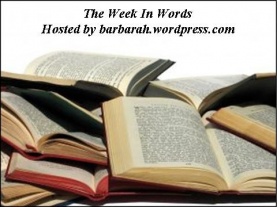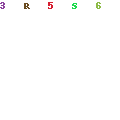 Do you remember the library book reading plan I unveiled last month?
Do you remember the library book reading plan I unveiled last month?
150 items checked out for six weeks?
I’ve had to lower my expectations–which means that this box of books is being returned to the library today…
unread.
I still did get a bit of reading done though:
The Inimitable Jeeves by P.G. Wodehouse
I’ve never reviewed anything by Wodehouse for bekahcubed–mostly because I’ve been inclined to believe that everyone already knows about him and about Jeeves and Wooster and that I was the last person on the planet to discover just how delightful this author and his characters are. But perhaps there is someone like me a year ago, who had never been introduced. Wodehouse is a fantastic comedic writer, with tales of hilarious capers that have the advantage of being CLEAN.
Munich Signature and Danzig Passage by Bodie Thoene
My sister LOVED the Zion Chronicles when we were teenagers. I’m not sure if I ever even tried to read one–but I was sure I wouldn’t be interested. They were too full of history, too wrapped up with music, too…too…Anna. My sister clearly had better taste in books than I did. I started reading the first in this series when I was restlessly looking for something to read at my folks’ house in between grading endless finals at the end of the last semester–and have been hopelessly hooked. These are some of the most engaging novels I have ever read. Set on the cusp of the second World War, they follow a small group of Jewish musicians from country to country as the nations of the world fall to Hitler’s insanity.
Much Ado about Anne by Heather Vogel Frederick
I read this one as part of Carrie’s L.M. Montgomery Reading Challenge–and thoroughly enjoyed reading about a book club reading Anne of Green Gables (how’s that for a mouthful?) Check out my review for further details.
The Science of Sexy by Bradley Bayou
Um, yeah. Don’t really know how much more I can say about this book than what I already wrote here. Follow the link if you want to hear about how my family (Mom, sister, brothers, and Dad) reviewed this book on fashion/style together.
28 Children’s Picture Books author name BARANSKI-BARKLEM
Picture books are always a mix of delights and duds. I sorta reviewed Lynne Barasch’s A Country Schoolhouse, which I enjoyed quite a deal. But my absolute favorite find in this batch is the group I haven’t reviewed yet–a collection of books by Jill Barklem about the animals that inhabit “Brambly Hedge”. The stories–and the art–remind me of Beatrix Potter with a little bit of The Hobbit thrown in. Absolutely delightful (but I’m sure I’ll be writing about these more in depth later!)
4 children’s nonfiction books about Massachusetts
And I still don’t know how to spell it. Someday, I’m going to remember that there’s a double s, then a single s, then a double t, then a single s. Only ONE set of double s’s, bekahcubed! Get it? (Can anybody guess how often I’ve given myself that speech?)
Ask me Anything a Dorling-Kindersley book
One of my favorites of the whole bunch–I’ve checked it out something like five times already and still haven’t gotten all the way through it. It’s 300 BIG pages filled with interesting factoids about absolutely everything. Info-holic that I am, I can’t abide to just skim it–I wanted to read the whole thing. (I read to page 240 and skimmed the rest.) Most of the sections are absolutely amazing–but readers must be forewarned that the section on dinosaurs is a load of evolutionary hooey (despite the fact that there’s plenty to be explored about dinosaurs without reference to evolution, this book chose to make the ENTIRE discussion of dinosaurs about evolution). Anyhow, I still enjoyed this book fully, learning about everything from super-fast cars to g-forces to how Venus flytraps catch flies.
Two cookbooks
I’m going to rave about both of these sometime in the next couple of months, but The Pioneer Woman Cooks by Ree Drummond and Quick Cooking for Two by Sunset magazine were both winners by my book. I’ve gotten rave reviews and had more fun cooking from these two books than I have from any in years! Definitely worth picking up.
Course, even after taking back a bunch unread, I still have two weeks with what’s left–and there’s plenty left!
I’m gonna focus first, though, on finishing up what’s currently in progress:

- Anne of Green Gables by L.M. Montgomery
- Bright-sided : how the relentless promotion of positive thinking has undermined America by Barbara Ehrenreich
- Composting by Liz Ball
- Confessions by St. Augustine
- The Liturgical Year by Joan Chittister and Phyllis Tickle
- The Pursuit of Holiness by Jerry Bridges
- The woman’s fix-it car care book by Karen Valenti
Don’t forget to drop by 5 Minutes 4 Books to see what others are reading this month!




 A little girl asks her Grandpa, the professor, to tell her the story of how he became so smart. The grandpa narrates the rest of the story, telling of the three room country school house he attended. He tells how their school was a working class school–how all the kids had to help their parents with the family work after they got done with school. He tells how they had spelling bees and geography bees and history bees. He tells of the games that they played in an open field. He tells of how they used an outhouse and had to be taught how to flush a toilet when the school got indoor plumbing.
A little girl asks her Grandpa, the professor, to tell her the story of how he became so smart. The grandpa narrates the rest of the story, telling of the three room country school house he attended. He tells how their school was a working class school–how all the kids had to help their parents with the family work after they got done with school. He tells how they had spelling bees and geography bees and history bees. He tells of the games that they played in an open field. He tells of how they used an outhouse and had to be taught how to flush a toilet when the school got indoor plumbing.